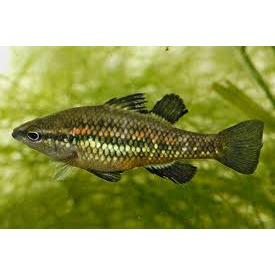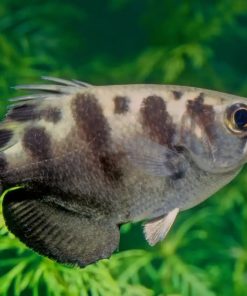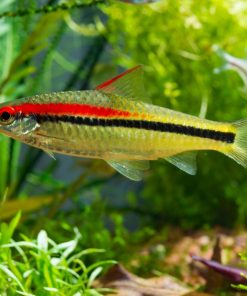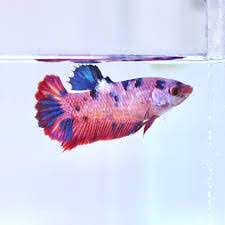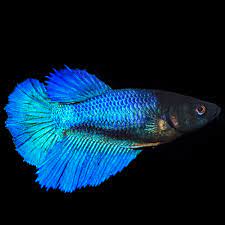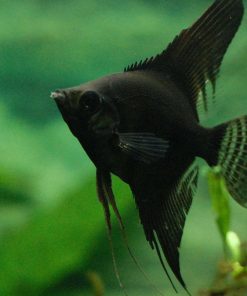Pygmy Perch Aquarium Gallery
$ 19,95 $ 11,97
A small freshwater fish endemic to the south-west of Western Australia. The mottled body colouration of olive, brown and green usually includes two orange stripes down the sides. Males become brightly coloured during the breeding season with golden mottling on sides, a reddish-orange belly and dark fins. Females become slightly bluish at this time.
This common and widespread species occurs in a range freshwater habitats usually amongst aquatic vegetation, and will also tolerate slightly brackish waters.
Pygmy Perch are a Western Australian native fish, which can generally tolerate water temperatures of between 0 and 25 degrees. They are perfect for native frog ponds as they are too small to eat tadpoles, but are great at eating mosquito larvae, and small amounts of algae.
Pygmy perch can tolerate a range of water conditions, both flowing and static and are reasonably tolerant of saline conditions. They are typically found in aquatic vegetation on the margins of streams or lakes. They have a varied diet of benthic crustaceans and terrestrial insects, and are especially voracious consumers of mosquito larvae. Studies have found that pygmy perch are in fact much better at controlling mosquito larvae than are gambusia, which were originally introduced for that purpose.
Western pygmy perch are one of the most common and widespread native fishes in south-western Australia, although they have declined in upper catchment areas where water is very saline. Because of their hardy nature, ease of breeding and ability to control mosquito larvae, they are often sold in aquarium shops for stocking in outdoor ponds.
Fast Shipping and Professional Packaging
Because of our long-standing relationship with UPS FedEx DHL as well as other leading global carriers, we can offer a variety shipping options. Our warehouse staff is highly skilled and will wrap your goods in accordance with our exact and precise specifications. Your goods will go through a thorough inspection and be adequately secured before being shipped. We ship to thousands customers every day from all over the world. This demonstrates our dedication to become the biggest online retailer in the world. Both Europe as well as the USA have distribution and warehouse centers.
Note that orders containing more than one item are processed according to the particular item.
Before shipping, we will inspect the ordered items thoroughly. Today, the majority of orders will be delivered within 48 hours. The delivery time is estimated to be between three and seven days.
Returns
Due to the multiple parties involved, including the factory and the warehouse, we're unable to completely manage our stock. Therefore, the actual inventory could change at any time. It's possible that the stock may run out after your order has been processed.
Our policy is for 30 days. If you don't receive your product within 30 days, we are not able to issue a refund or an exchange.
Your item should be in its original packaging and in good condition. It must also not be used. The item must be returned in the original packaging.
Related products
Freshwater tropical fish
Freshwater tropical fish
Freshwater tropical fish
Freshwater tropical fish
Freshwater tropical fish
Freshwater tropical fish
Angelfish Bulgarian Seal Point 4cm Bundarra Tropical Fish Farm
Freshwater tropical fish
Freshwater tropical fish
Freshwater tropical fish
Freshwater tropical fish
Freshwater tropical fish
Freshwater tropical fish
Freshwater tropical fish
Freshwater tropical fish
Freshwater tropical fish
Freshwater tropical fish
Freshwater tropical fish
Freshwater tropical fish
Freshwater tropical fish
Apistogramma – Agassizii Double Red PAIR Bundarra Tropical Fish Farm
Freshwater tropical fish
Freshwater tropical fish
Freshwater tropical fish
Freshwater tropical fish
Freshwater tropical fish
Angelfish Rio Nanay Peru Altum F1 5cm Bundarra Tropical Fish Farm
Freshwater tropical fish
Apistogramma – Cacatuoides Mega Orange PAIR Bundarra Tropical Fish Farm
Freshwater tropical fish
Freshwater tropical fish
Freshwater tropical fish
Freshwater tropical fish
Freshwater tropical fish
Freshwater tropical fish
Freshwater tropical fish
